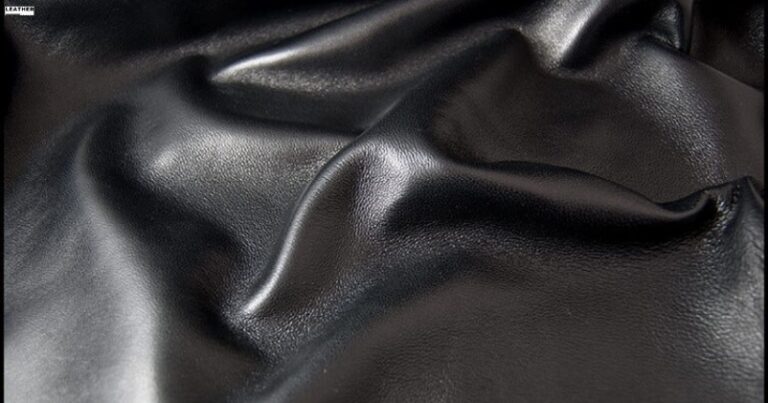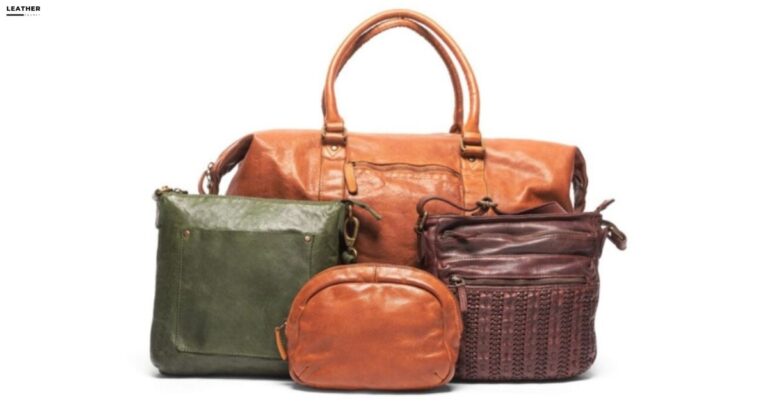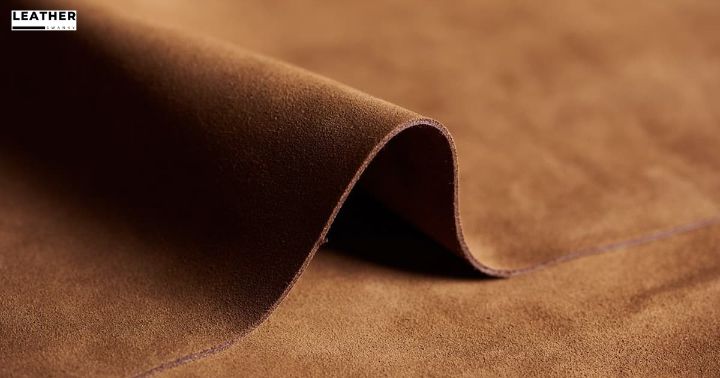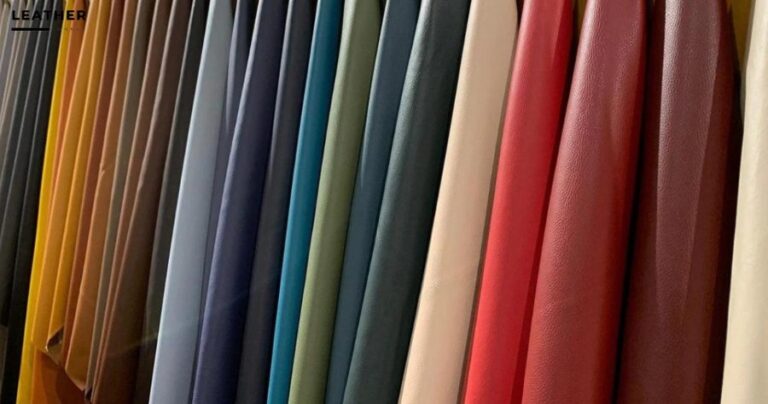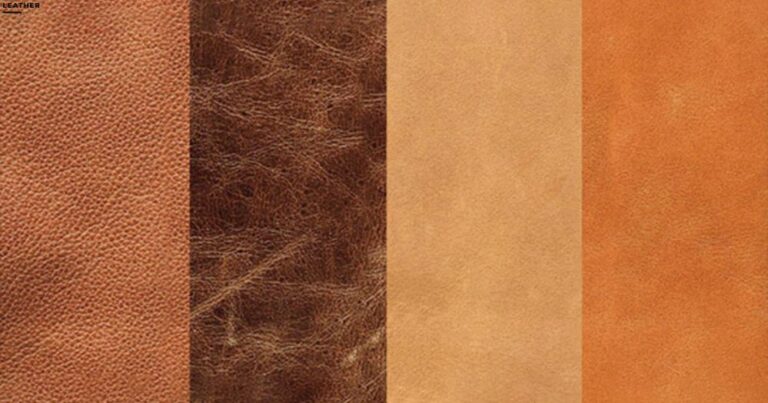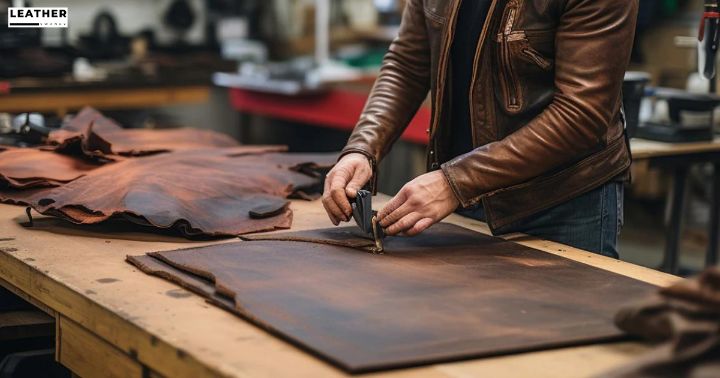How Is Leather Recyclable

Ever wondered if that old leather jacket you’ve outgrown could escape the landfill? You’re in the right place.
Leather items are indeed recyclable, but it's not as straightforward as tossing them in your recycling bin. It requires a specialized process that isn't widely available. To recycle leather, your items first need to be collected. This is often done by charities or recycling programs that accept donations of used leather goods. Once collected, the leather undergoes a detailed recycling process. It's cleaned, broken down, and processed to create a new material, often referred to as recycled leather.
In this article, we’ll delve into the ins and outs of leather recycling. We’ll explore the types of leather that can be recycled, how it’s done, and why it’s important. You’ll discover the environmental benefits and potential uses of recycled leather.
Jump to a Specific Section
- 1 Basic Overview
- 2 Importance of Leather Recycling
- 3 Types of Leather Suitable for Recycling
- 4 Step-by-Step Guide to Leather Recycling
- 5 Potential Uses for Recycled Leather
- 6 Environmental Benefits
- 7 Final Thoughts
- 8 Frequently Asked Questions
- 8.1 What Are the Potential Health Risks Associated With Leather Recycling?
- 8.2 What Kind of Equipment Is Used in the Leather Recycling Process?
- 8.3 Are There Any Legal Regulations or Restrictions Related to Leather Recycling?
- 8.4 How can leather be sustainable?
- 8.5 What are the benefits of using sustainable leather?
- 8.6 What are some examples of recycled leather goods?
- 8.7 How do leather manufacturers contribute to sustainability?
- 8.8 What happens to leather at a recycling center?
- 9 Resources Used for Research
Basic Overview
- Leather scraps can be used to create smaller leather goods or composite leather.
- Leather recycling can be done through mechanical methods (shredding and blending) or chemical methods (breaking down with chemicals).
- Upcycling and repurposing are also methods of leather recycling.
- Leather recycling reduces the demand for virgin leather, minimizing strain on livestock populations.
The environmental impact of leather is significant. From the chemicals used in the tanning process to the energy required to recycle it, leather has a hefty carbon footprint.
Importance of Leather Recycling
Every single piece of leather you recycle plays a crucial role in reducing waste and conserving natural resources.
By understanding the importance of leather recycling, you contribute to a circular economy that values reuse over disposal.
Recycling and repurposing of leather isn’t just beneficial, it’s necessary. Leather scraps often end up in landfills, where they decompose and release harmful greenhouse gases, adding to our environmental woes.
When recycled, though, these scraps become valuable resources, transformed into new products, reducing the need for virgin materials.
Moreover, recycling leather reduces the environmental impact of the leather industry, a sector notorious for its high resource consumption and pollution.
When you recycle leather, you’re not just saving a piece of material from the landfill, you’re also reducing the demand for new leather production, which in turn conserves water, energy, and other resources.
Lastly, leather recycling fosters innovation and creativity. It challenges manufacturers to develop new methods and products from recycled leather, driving economic growth while maintaining sustainability.
Types of Leather Suitable for Recycling
You might be wondering which types of leather are suitable for recycling. The truth is, that a variety of leather materials can be recycled.
This includes everything from old leather goods like jackets, shoes, and handbags to manufacturing byproducts like leather scraps.
Firstly, full-grain leather, known for its high durability and quality, can be recycled. Since it’s the most premium leather, recycling it reduces waste and promotes sustainability.
Bonded leather, a blend of leather scraps and artificial materials, is also recyclable. Its recycling process involves grinding the material into a pulp and then bonding it with adhesives to create new products.
Secondly, you should consider recycling leather scraps. These scraps, often discarded during the manufacturing process, are perfect for recycling.
They can be used to create smaller leather goods or even bonded with other materials to produce composite leather.
Step-by-Step Guide to Leather Recycling
It’s important to understand the step-by-step process involved in leather recycling to ensure you’re contributing optimally to a more sustainable future.
First, it’s essential to collect and sort the pieces of leather. This includes separating the leather from other materials and categorizing it according to type and quality.
Next, these sorted pieces of leather undergo a process of repurposing. The method of repurposing can vary, they might be shredded and used as stuffing or padding, or they could be bound together to create a new piece of leather.
Finally, the repurposed leather is treated, colored, and finished to prepare it for its new life.
To summarize, here’s a bullet list of the process:
- Collection and sorting of leather pieces
- Repurposing the sorted pieces of leather
- Treating and finishing the refurbished leather
Understanding the process of making leather recyclable helps you see the value in your efforts. It’s more than just getting rid of waste; it’s about giving new life to discarded materials.
There are three methods for recycling leather:
1. Chemical Recycling
This method involves using various chemicals to break down the leather into its base components.
It’s a critical part of the recycling center’s operations to ensure sustainable leather production.
However, this process isn’t without its share of challenges. One of the major concerns is the use of toxic chemicals, which can contaminate the environment if not handled responsibly.
Below is a table highlighting the key aspects of chemical recycling in leather manufacturing:
| Steps in Chemical Recycling | Pros | Cons |
|---|---|---|
| Breaking down of leather | Efficient utilization of leather waste | Requires technical expertise |
| Use of chemicals | Can bring about complete recycling | Risk of toxic chemicals |
| Treatment of toxic waste | Ensures sustainability | Requires stringent safety measures |
| Reuse of base components | Enhances product lifecycle | Quality control needed |
| Disposal of remaining waste | Environment-friendly | Requires careful monitoring |
2. Mechanical Recycling
It is a relatively straightforward method used to repurpose leather. This process allows us to take old leather and transform it into recycled material that can be used in a variety of ways.
To understand mechanical recycling, it’s essential to know the steps involved:
- Firstly, old leather is collected and sorted based on its condition and type. This includes taking leather pieces from discarded goods.
- Next, these leather pieces are mechanically processed. They’re shredded into small bits, providing a new form that’s easier to reuse.
- Lastly, the shredded leather is then blended with other materials. This mixture can then be used to create new products.
This process not only promotes the reuse of leather but also significantly reduces waste. It’s a way to ensure that nothing goes to waste and that every piece of leather finds a new purpose.
3. Upcycling and Repurposing
Both methods are ingenious ways of using recycled leather to create new, functional items. Not only can these processes make leather sustainable, but they also significantly reduce waste.
Upcycling, for instance, involves transforming old leather goods into higher-quality pieces. So, those leather boots you’re no longer wearing could turn into a stylish handbag.
Repurposing, on the other hand, refers to using old leather items for a completely different function. Believe it or not, an old leather couch could become a vintage-looking diary cover.
Here’s an overview of how upcycling and repurposing are changing the game in leather recycling:
| Methods | Advantages | Examples |
|---|---|---|
| Upcycling | Enhances value, extends lifespan | Old boots to handbags |
| Repurposing | Maximizes utility encourages creativity | Old couch to diary cover |
Potential Uses for Recycled Leather
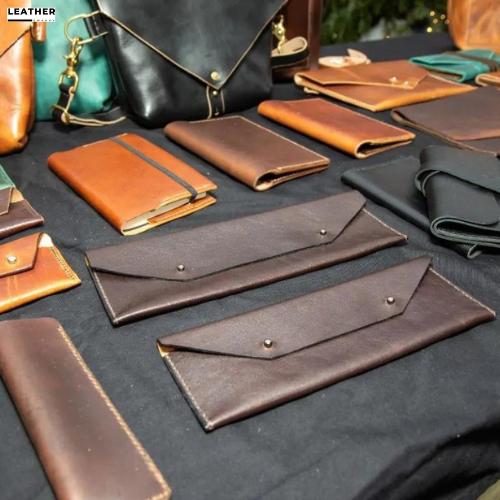
Recycled leather offers a wealth of possibilities, allowing you to transform discarded items into unique and sustainable products.
There are several ways to recycle leather, each with its own potential uses for recycled leather.
For example, leather from an old sofa could be repurposed into a stylish new handbag, or old leather jackets could give a new lease of life to your home decor as a chic throw pillow. The creative uses are boundless.
Consider these three potential uses for recycled leather:
- Fashion accessories: Items like belts, handbags, and wallets can easily be crafted from recycled leather, adding a touch of vintage charm to your wardrobe.
- Home décor: Recycled leather products can be used in a variety of home décor applications. Think of area rugs, lampshades, or even wall art.
- Furniture upholstery: Old leather furniture can be stripped down and the leather reused to upholster new pieces.
Environmental Benefits
The environmental benefits of leather recycling are substantial, and they can’t be overlooked in a world increasingly concerned about sustainability.
Firstly, leather recycling reduces the demand for virgin leather. This means fewer animals are needed for their hides, which reduces the strain on livestock populations and minimizes the associated environmental costs.
Moreover, the process of obtaining and treating virgin leather uses a considerable amount of energy and water and produces harmful byproducts.
By reusing existing leather, you’re assisting in decreasing these impacts on the environment.
Secondly, leather recycling helps minimize waste. Rather than throwing away old leather goods, they can be recycled into new items, reducing the amount of waste going into our landfills.
This not only saves space but also reduces the harmful gases produced when leather decomposes.
Final Thoughts
Recycling leather isn’t just a trend, it’s a necessity for our environment. Whether it’s chemical, mechanical, or through upcycling, there’s a method to suit any type of leather.
The potential uses for recycled leather are vast, and the environmental benefits can’t be underestimated.
So, don’t simply toss that old leather jacket or worn-out boots, recycle them. It’s a small step, but one that can significantly contribute to a greener planet.
Frequently Asked Questions
What Are the Potential Health Risks Associated With Leather Recycling?
When recycling leather, you’re exposed to potential health risks. These include respiratory issues from dust and allergens, skin irritation from chemicals, and potential exposure to harmful substances like chromium salts.
What Kind of Equipment Is Used in the Leather Recycling Process?
In leather recycling, you typically use shredders and granulators to break down the material. Then, hydraulic presses and binders help reshape it. Keep in mind, that it’s a complex process needing specialized equipment.
Are There Any Legal Regulations or Restrictions Related to Leather Recycling?
Yes, there are legal regulations for leather recycling. They’re typically related to environmental protection, managing waste, and worker safety. It’s important you familiarize yourself with these laws to ensure your operations are legal and ethical.
How can leather be sustainable?
Leather can be sustainable by reusing leather scrap, using sustainable leather manufacturing processes, and selling recycled leather goods.
What are the benefits of using sustainable leather?
Using sustainable leather reduces waste generation, lowers greenhouse gas emissions, and contributes to a more environmentally friendly leather industry.
What are some examples of recycled leather goods?
Recycled leather goods can include handbags, small leather goods, and other products made from recycled leather materials.
How do leather manufacturers contribute to sustainability?
Leather manufacturers contribute to sustainability by reusing waste materials, utilizing by-products, and meeting the demand for leather with recycled products.
What happens to leather at a recycling center?
At a recycling center, leather is processed into leather pulp, which can then be formed into new recycled leather products.
Resources Used for Research
- Mechanical properties and preferences of natural and artificial leathers, and their classification with a focus on leather for bags
- Caring for Leather, Skin and Fur
- Sewing with Leather and Suede: Tips, Techniques and Inspiration
- The manufacture of leather
- Leather Processing & Tanning Technology Handbook
- Leather Processing, Its Effects on Environment and Alternatives of Chrome Tanning

